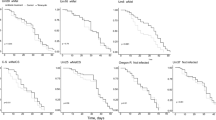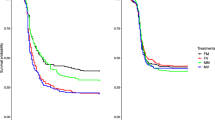Abstract
Spiroplasma endosymbionts are maternally inherited microorganisms which infect many arthropod species. In some Drosophila species, it acts as a reproductive manipulator, spreading in populations by killing the sons of infected mothers. Distinct Drosophila melanogaster populations from Brazil exhibit variable male-killing Spiroplasma prevalences. In this study, we investigated the presence of variability for the male-killing phenotype among Drosophila and/or Spiroplasma strains and verified if it correlates with the endosymbiont prevalence in natural populations. For that, we analyzed the male-killing expression when Spiroplasma strains from different populations were transferred to a standard D. melanogaster line (Canton-S) and when a common Spiroplasma strain was transferred to different wild-caught D. melanogaster lines, both at optimal and challenging temperatures for the bacteria. No variation was observed in the male-killing phenotype induced by different Spiroplasma strains. No phenotypic variability among fly lines was detected at optimal temperature (23 °C), as well. Conversely, significant variation in the male-killing expression was revealed among D. melanogaster lines at 18.5 °C, probably caused by imperfect transmission of the endosymbiont. Distinct lines differed in their average sex ratios as well as in the pattern of male-killing expression as the infected females aged. Greater variation occurred among lines from one locality, although there was no clear correlation between the male-killing intensity and the endosymbiont prevalence in each population. Imperfect transmission or male killing may also occur in the field, thus helping to explain the low or intermediate prevalences reported in nature. We discuss the implications of our results for the dynamics of male-killing Spiroplasma in natural populations.

Similar content being viewed by others
References
Anbutsu H, Fukatsu T (2003) Population dynamics of male-killing and non-male-killing spiroplasmas in Drosophila melanogaster. Appl Environ Microbiol 69:1428–1434
Anbutsu H, Goto S, Fukatsu T (2008) High and low temperatures differently affect infection density and vertical transmission of male-killing Spiroplasma symbionts in Drosophila hosts. Appl Environ Microbiol 74:6053–6059
Cavalcanti AGL, Falcão DN, Castro LE (1957) “Sex-ratio” in Drosophila prosaltans—a character due to interaction between nuclear genes and cytoplasmic factors. Am Nat 91:327–329
Duron O, Bouchon D, Boutin S, Bellamy L, Zhou L, Engelstadter J, Hurst GD (2008) The diversity of reproductive parasites among arthropods: Wolbachia do not walk alone. BMC Biol 6:27
Engelstädter J, Hurst GDD (2009) The ecology and evolution of microbes that manipulate host reproduction. Annu Rev Ecol Evol Syst 40:127–149
Haselkorn TS (2010) The Spiroplasma heritable bacterial endosymbiont of Drosophila. Fly 4:80–87
Hoffmann AA, Clancy DJ, Merton E (1994) Cytoplasmic incompatibility in Australian populations of Drosophila melanogaster. Genetics 136:993–999
Hurst GD, Jiggins FM (2000) Male-killing bacteria in insects: mechanisms, incidence, and implications. Emerg Infect Dis 6:329–336
Hurst GD, Johnson AP, Schulenburg JH, Fuyama Y (2000) Male-killing Wolbachia in Drosophila: a temperature-sensitive trait with a threshold bacterial density. Genetics 156:699–709
Hurst GDD, Majerus MEN (1993) Why do maternally inherited microorganisms kill males? Heredity 71:81–95
Hutchence KJ, Pade R, Swift HL, Bennett D, Hurst GDD (2012) Phenotype and transmission efficiency of artificial and natural male-killing Spiroplasma infections in Drosophila melanogaster. J Inverteb Pathol 109:243–247
Jaenike J (2007) Fighting back against male killers. Trends Ecol Evolut 22:167–169
Jaenike J (2007) Spontaneous emergence of a new Wolbachia phenotype. Evolution 61:2244–2252
Jaenike J, Unckless RL, Cockburn SN, Boelio LM, Perlman SJ (2010) Adaptation via symbiosis: recent spread of a defensive symbiont in Drosophila. Science 329:212–215
Kageyama D, Anbutsu H, Shimada M, Fukatsu T (2009) Effects of host genotype against the expression of Spiroplasma-induced male killing in Drosophila melanogaster. Heredity 102:475–482
Martins A, Ventura IM, Klaczko LB (2010) Spiroplasma infection in Drosophila melanogaster: What is the advantage of killing males? J Invertebr Pathol 105:145–150
Mateos M, Castrezana SJ, Nankivell BJ, Estes AM, Markow TA, Moran NA (2006) Heritable endosymbionts of Drosophila. Genetics 174:363–376
McGraw EA, Merritt DJ, Droller JN, O'Neill SL (2002) Wolbachia density and virulence attenuation after transfer into a novel host. PNAS 99:2918–2923
Montenegro H, Klaczko LB (2004) Low temperature cure of a male killing agent in Drosophila melanogaster. J Invertebr Pathol 86:50–51
Montenegro H, Petherwick AS, Hurst GDD, Klaczko LB (2006) Fitness effects of Wolbachia and Spiroplasma in Drosophila melanogaster. Genetica 127:207–215
Montenegro H, Solferini VN, Klaczko LB, Hurst GDD (2005) Male-killing Spiroplasma naturally infecting Drosophila melanogaster. Insect Mol Biol 14:281–287
Montenegro H, Souza WN, da Silva LD, Klaczko LB (2000) Male-killing selfish cytoplasmic element causes sex-ratio distortion in Drosophila melanogaster. Heredity 85:465–470
Osaka R, Nomura M, Watada M, Kageyama D (2008) Negative effects of low temperatures on the vertical transmission and infection density of a Spiroplasma endosymbiont in Drosophila hydei. Curr Microbiol 57:335–339
Poinsot D, Bourtzis K, Markakis G, Savakis C, Mercot H (1998) Injection of a Wolbachia from Drosophila melanogaster into D. simulans: host effect and cytoplasmic incompatibility relationships. Genetics 150:227–237
Pool JE, Wong A, Aquadro CF (2006) Finding of male-killing Spiroplasma infecting Drosophila melanogaster in Africa implies transatlantic migration of this endosymbiont. Heredity 97:27–32
Silva NO, Guenther LL, Xie J, Mateos M (2012) Infection densities of three Spiroplasma strains in the host Drosophila melanogaster. Symbiosis 57:83–93
Tinsley MC, Majerus ME (2007) Small steps or giant leaps for male-killers? Phylogenetic constraints to male-killer host shifts. BMC Evol Biol 7:238
Unckless RL, Jaenike J (2012) Maintenance of a male-killing Wolbachia in Drosophila innubila by male-killing dependent and male-killing independent mechanisms. Evolution 66:678–689
Vautrin E, Vavre F (2009) Interactions between vertically transmitted symbionts: cooperation or conflict? Trends Microbiol 17:95–99
Veneti Z, Bentley JK, Koana T, Braig HR, Hurst GDD (2005) A functional dosage compensation complex required for male killing in Drosophila. Science 307:4
Veneti Z, Zabalou S, Papafotiou G, Paraskevopoulos C, Pattas S, Livadaras I, Markakis G, Herren JK, Jaenike J, Bourtzis K (2012) Loss of reproductive parasitism following transfer of male-killing Wolbachia to Drosophila melanogaster and Drosophila simulans. Heredity 109:306–312
Ventura IM, Martins AB, Lyra ML, Andrade CA, Carvalho KA, Klaczko LB (2012) Spiroplasma in Drosophila melanogaster populations: prevalence, male-killing, molecular identification, and no association with Wolbachia. Microb Ecol 64:794–801
Watts T, Haselkorn TS, Moran NA, Markow TA (2009) Variable incidence of Spiroplasma infections in natural populations of Drosophila species. PLoS One 4:e5703
Xie J, Vilchez I, Mateos M (2010) Spiroplasma bacteria enhance survival of Drosophila hydei attacked by the parasitic wasp Leptopilina heterotoma. PLoS One 5:e12149
Yamada MA, Watanabe TK, Koana T (1985) Absence of resistance genes against male-killing action of the SRO in Drosophila melanogaster. Jpn J Genet 60:93–102
Zar JH (1999) Biostatistical analysis. Prentice Hall, Englewood Cliffs
Zug R, Hammerstein P (2012) Still a host of hosts for Wolbachia: analysis of recent data suggests that 40 % of terrestrial arthropods species are infected. PLoS One 7:e38544
Acknowledgments
We thank Ayana Martins and Lyes Assis Garcia for collections in Salvador and Rio de Janeiro, Klélia Carvalho and Claudete Couto for their technical support, Horácio Montenegro for statistical help, Espaço da Escrita (Unicamp) for reviewing the English version of the manuscript, John Pool for providing lines from Uganda, and anonymous reviewers for their suggestions. This study was supported by the Conselho Nacional de Desenvolvimento Científico e Tecnológico (CNPq), Coordenação de Aperfeiçoamento de Pessoal de Nível Superior (CAPES), Fundação de Amparo à Pesquisa do Estado de São Paulo (FAPESP), and Fundo de Apoio ao Ensino, à Pesquisa e à Extensão—Unicamp (FAEPEX).
Conflict of Interest
The authors declare no conflict of interest.
Author information
Authors and Affiliations
Corresponding author
Additional information
Data Archiving
Data are available in the Dryad Digital Repository: doi:10.5061/dryad.qh113.
Electronic supplementary material
Below is the link to the electronic supplementary material.
Table S1
Average proprotions of females and standard errors for each strain, during the days 3–10. (XLSX 10 kb)
Rights and permissions
About this article
Cite this article
Ventura, I.M., Costa, T. & Klaczko, L.B. Low Temperature Reveals Genetic Variability Against Male-Killing Spiroplasma in Drosophila melanogaster Natural Populations. Microb Ecol 67, 229–235 (2014). https://doi.org/10.1007/s00248-013-0295-z
Received:
Accepted:
Published:
Issue Date:
DOI: https://doi.org/10.1007/s00248-013-0295-z




